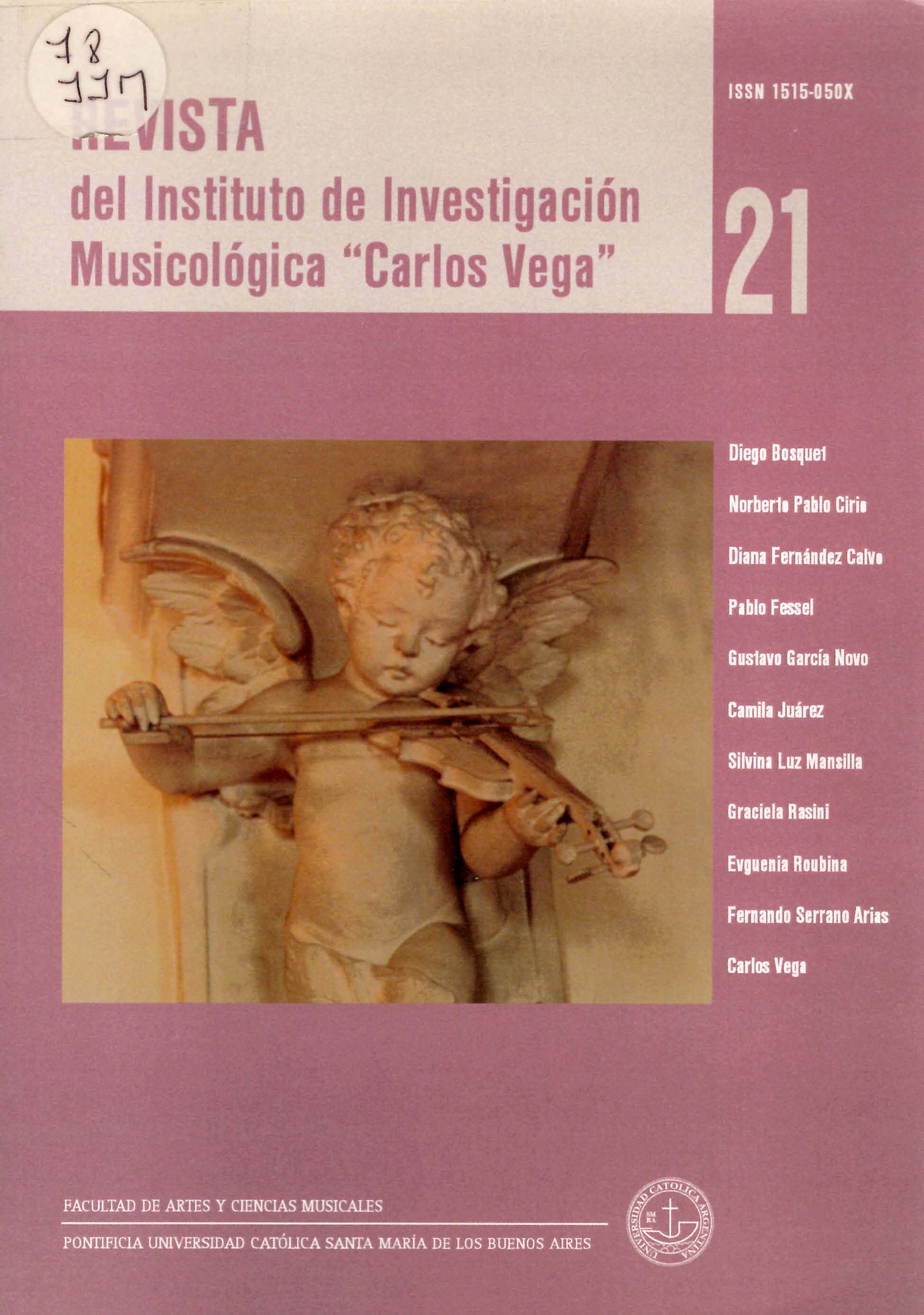El origen del concepto de textura en la crítica musical inglesa hacía comienzos del siglo XX
Keywords:
MUSICA; CRITICA MUSICAL; COMPOSICION MUSICAL; TEXTURAAbstract
The paper identifies the origin of the concept of texture in the English music criticisim from early 20th century. Musical modernity during the transition from the 19th to the 20th century developed new textural configurations. The theoretical representation of simultaneity rested up to that moment on a typological approach, based on a small collection of 'stylistic categories', such as polyphony, hmophony, among others. The new textures revealed not only the inadequacy of the existing categories, but also the insufficiency of the whole collection for their theoretical representation. European musicology devised different strategies to deal with this problem. One of them was the development of a new concept of simultanity, which gave to the term texture a precise and new sense. The elaboration of texture's concept by English cOlllposers and critics like Hubert Parry, George Dyson and Donald Tovey is historically bound to the reception in England of German contemporary music. Particularly, the critic was astound by new conformations of musical simultaneity in sections from works like Richard Strauss' Ein Heldenleben (1898) and Elektra (1908), sections that resisted the analysis through the available categories up to then. The paper examines this histcrical articulation in the development of lhe theory of texture.
Downloads
Downloads
Published
How to Cite
Issue
Section
License
Copyright (c) 2024 Pablo Fessel

This work is licensed under a Creative Commons Attribution-NonCommercial-ShareAlike 4.0 International License.





 e-ISSN 2683-7145 | ISSN 1515-050X
e-ISSN 2683-7145 | ISSN 1515-050X